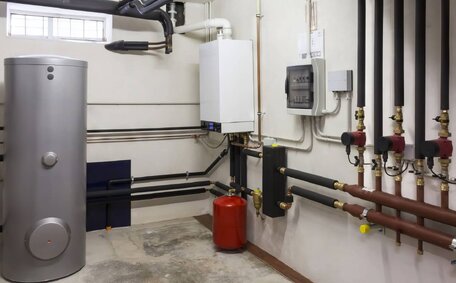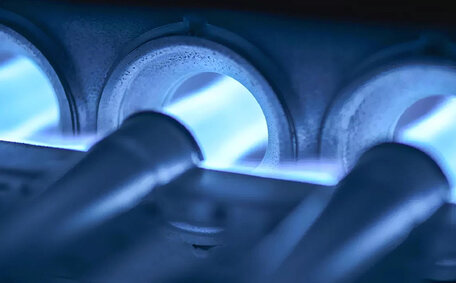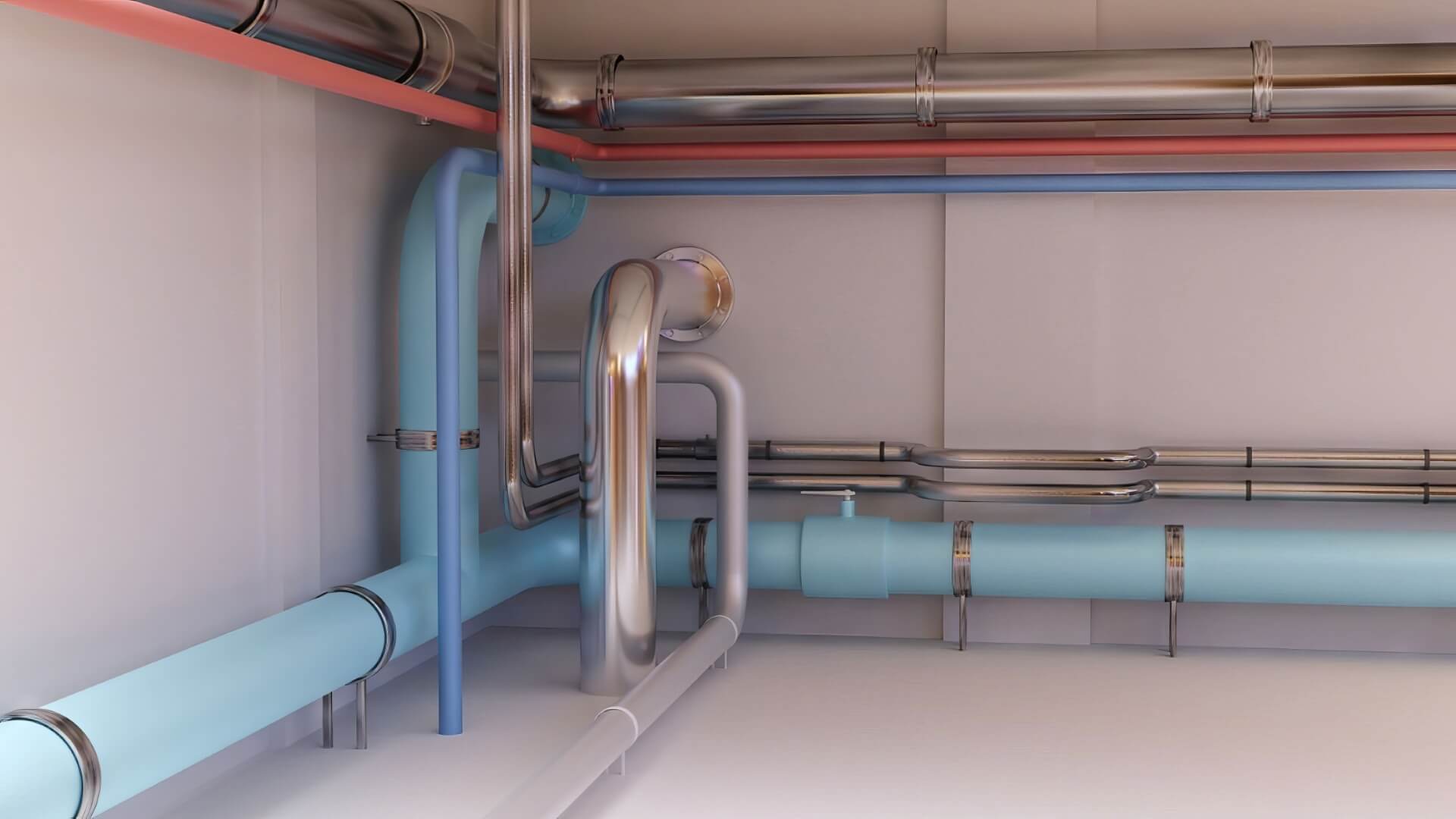What Is Gas Line Pressure Testing?
Gas line pressure testing, essential for safety, involves pressurising the pipelines with air or nitrogen above normal operating pressures, then monitoring for any pressure drops over time.
The purpose of gas line pressure testing is to ensure the piping shall contain no leaks and can withstand operating pressures without failing. Even the slightest gas leak can permit a hazardous amount of gas, thus testing is critical for identifying issues before commissioning a new gas line or updating existing gas lines.
Natural gas system tests often involve gas pressure measurements, like the water column method, performed by certified gas fitters. The lines are isolated from active gas appliances through shutoff valve systems then filled, typically with air or nitrogen from high pressure cylinders equipped with regulators and gauge pressure readers. The testing targets a pressure 1.5 to 3 times above the normal working pressure, accounting for safety factors, to ensure home safety.
Once pressurised, the lines are thoroughly checked with leak detector fluids, hot water, electronic devices or other methods. The pipes should sustain a low pressure less troubling than threshold levels; any reductions could suggest cracks, faulty joins or needed repairs. The gas fitter will also check associated components like shutoff valves and connections.
Homeowners usually engage professional plumbers and gas fitters for gas installation pressure tests. For commercial sites, consult with the gas company about the certification of tests required before utilities approve turning on gas supplies, especially for newly installed systems.
Conducting regular tests over several days on an existing gas line gives confidence of integrity, which is indispensable for averting hazardous leaks in gas systems.
Why Is Gas Pressure Testing Important?
Monitoring test pressures and adhering to the gas code when testing gas lines is paramount for safety and compliance in the plumbing sector. It verifies the integrity of fuel gas piping and helps prevent dangerous gas leaks that can lead to explosions, fires, carbon monoxide poisoning, and other perils.
There are several techniques to test gas line integrity, including one that pressurises the pipes to levels higher than the standard 4 ounces per square inch at which natural gas enters a home.
Elevated pressures help reveal leaks and faults via pressure drops, making it a critical step in the testing process.
Compliance with test procedures is mandatory for verifying piping pressure during the installation or alteration of gas systems. Neglecting issues where pressure less than expected during pressure test gas checks of new or amended installations could result in undetected leaks with severe outcomes. Gas fitters have an obligation to do pressure tests correctly before appliances are connected or signed off.
In addition to satisfying regulations, conducting thorough tests on any new natural gas lines ensures quality and instills confidence in the safe use of gas appliances. Engineers use sensitive electronic gas detectors, leak detection fluids and other methods to thoroughly verify integrity at higher pressures. This helps confirm that joints and components will remain gas-tight during decades of service.
In summary, gas pressure testing is a vital safety procedure for evaluating system integrity and preventing dangerous leaks. It ensures gas pipework is fit for purpose, able to withstand up to the rigorous demands, and compliant with Australian standards for residential and commercial properties.
Safety Protocols for Gas Line Testing
Gas line pressure testing requires stringent safety protocols to ensure protection against gas exposure hazards.
As pressurised gas has risks of ignition, explosion and toxic fumes if released, Only licensed and experienced gas fitters are qualified to perform gas testing. At Bossley Park Plumbing, we deliver excellent work gas pressure testing, conducted safely by our fully qualified technicians.
Before starting, the area around the piping system should be made safe by removing ignition sources and combustible materials. Make sure appropriate gas detection equipment is on hand to check for leaks, along with fire extinguishers. Access to gas shutoff valves should be clear in case a leak occurs and lines need immediate isolation.
Technicians must don safety equipment such as respirators, gloves, and eyewear during gas line testing. A well-ventilated site and maintaining a safe distance for non-essential staff are critical safety measures.
Using non-reactive gases like nitrogen, propane, or other inert gases is a key safety protocol in testing. Pressurised oxygen can react violently when combined with pipe contaminants like oil or grease.
After testing, systems must be carefully brought back to normal operating pressure, with close monitoring for any pressure fluctuations.
By engaging professional gas fitters and following rigorous procedures, your gas line pressure tests can be conducted safely. At Bossley Park Plumbing, we specialise in this with years of experience and fully compliant operations.
Preparing for a Gas Line Pressure Test
Thorough preparation is vital before commencing a test on working gas lines to ensure it is conducted safely and effectively.
Preparation involves the following key steps:
- Clicking to expand pipeline diagrams ensures there are no misunderstandings regarding test parameters
- Shutting off the gas supply at the gas meter, then individually isolating all outlets and appliances via their shutoff valves
- Disconnecting or capping all gas appliance connectors to prevent pressurised gas entering
- Affixing tags or warning signs to give clear indication that testing is underway
- Obtaining necessary equipment - this includes a pressure test gauge able to handle required pressures, along with tools for purge/venting and leak detection
- Determining suitable test medium - compressed air or nitrogen are commonly used
- Checking ambient temperature - this affects permissible pressure loss rates
- Visually inspecting the line being tested, including all pipework, joints and components before pressurisation
- Ensuring effective ventilation and clearing the zone of ignition sources
- Confirming that qualified personnel wearing personal protective equipment (PPE) will conduct monitoring
With preparations and safety measures in place, pressurisation and thorough checks can commence to ensure leak detection. At Bossley Park Plumbing, our licenced technicians follow Australian Standard AS/NZS 5601 and strict safety protocols when undertaking test gas pressure procedures.
Step-by-Step Procedure for Testing Gas Line Pressure
Testing gas line pressure precisely involves a methodical procedure carried out by qualified technicians:
- Prepare test equipment - nitrogen cylinders fitted with regulators, an appropriate test gauge able to handle required pressures, tubing, isolation valves, venting equipment, leak detection fluids and electronic gas detectors.
- Consult pipeline diagrams and specifications to ensure the system can hold pressure while determining what the pressure should be for test parameters like target pressure and permissible pressure loss rate as per AS/NZS 5601 or authorities.
- Isolate the specific gas line while identifying the section that requires testing using shutoff valves. Disable gas appliances by disconnecting or having the connectors capped off.
- Connect the nitrogen cylinder to an entry point of the isolated pipe section via tubing and a pressure regulator. Attach the test gauge.
- Verify ventilation is adequate around the test zone. Check for ignition sources and evacuate non-essential personnel.
- Open the nitrogen valve to steadily increase pipework pressure to 10-100% above normal, monitoring for consistency.
- Close inlet valve once target test pressure is achieved, applying pressure to create a closed system. Monitor pressure for the specified period of at least 30 minutes.
- Carefully check all joints, connections and pipe surfaces with bubble leak detector fluid or electronic gas detector.
- Should pressure loss exceed allowable rates, release pressure, repair leaks, and retest the affected area.
- Upon successful completion, gradually release pressure before reconnecting.
Precision pressure gas testing ensures networks are leak-free and able to operate safely at required pressures. Our licenced technicians follow rigorous procedures tailored to unique site parameters.
Interpreting Gas Pressure Test Results
Interpreting the results of a gas line pressure test requires analysing pressure measurements taken throughout the procedure. Understanding how gas pressure behaves is essential to gauge the test outcomes and shall be determined by:
- Initial test pressure - The starting pressure when the lines are first pressurised, which must meet the test pressure shall meet the required standards or specifications.
- Final test pressure - The pressure gauge reads after a specified test duration, such as 30 minutes.
- Pressure loss - The difference between initial and final pressures.
A well-installed, leak-free gas network usually shows less than 10% pressure loss after the specified monitoring duration. Pressure losses greater than 10% indicate possible leaks or defects needing investigation and repair.
Pressure gas line Loss Status Interpretation
| 0-10% loss | Pass | Gas lines are in sound condition with good integrity and no leaks detected. |
| >10-20% loss | Fail, potential minor leak | Some loss of pressure indicates a possible minor leak that should be located and repaired before retesting. |
| >20% pressure loss | Fail, major leak | There is likely a major leak present and creating unsafe pressure loss. The system cannot be certified and repairs are necessary. |
Gas safety authorities set allowable leakage rates for installations. Gas fitters assess pressure tests to determine system safety using their tools, expertise, and established leakage rates.
Troubleshooting Failed Gas Pressure Tests
If a gas pressure test fails due to leaks or inadequate pressure retention, gas gas troubleshooting helps identify and resolve underlying issues before retesting.
Common reasons for test failure include:
- Leaks at pipe joints, valves or fittings due to damage, wear or improper installation
- Seal failures on regulators, appliances or components
- Insufficient initial test pressure applied
- Incorrect test duration or parameters
- Faulty gauge providing inaccurate readings
- Temperature differences between initial and final readings
Steps for pinpointing whether there’s a leak include:
- Conducting close visual inspection of all pipework and connections while still pressurised to spot potential leaks
- Isolating sections and retesting to help locate any problematic areas
- Using leak detection fluids or electronic gas detectors to pinpoint smaller leaks
- Reviewing equipment, procedures and calculations to identify potential test execution issues
- Repairing damaged/faulty components like valves or regulators
- Adjusting and recalibrating test gauge if readings are suspect
- Carefully releasing test pressure before repairs are attempted
Qualified personnel must perform any necessary repairs or retests to ensure consumer safety.
When to Call a Professional Gas Fitter
It’s paramount to involve certified pros who know about gas line pressure testing and problem-solving when challenges surface that might undermine safety.
Homeowners should know when to call experts in situations such as:
- When installing new gas lines or making alterations to existing networks
- If routine leakage checks or visual inspections raise concerns
- After incidents potentially causing pipe, valve or appliance damage
- When pressure test failures occur and faults must be diagnosed
- To interpret pressure readings accurately and ensure regulatory compliance
- If leaks are detected and repairs become necessary
- For periodic certification testing of commercial and residential gas systems
Our experienced technicians have the expertise to conduct testing safely, pinpoint and fix problems before installing or providing certified reporting. We follow Australian Standards and use professional-grade tools and procedures tailored to your system’s specifications.
For reliable, compliant testing and troubleshooting, contact Bossley Park Plumbing on 1300 349 338 or email jobs@bossleyparkplumbingservices.com.au






